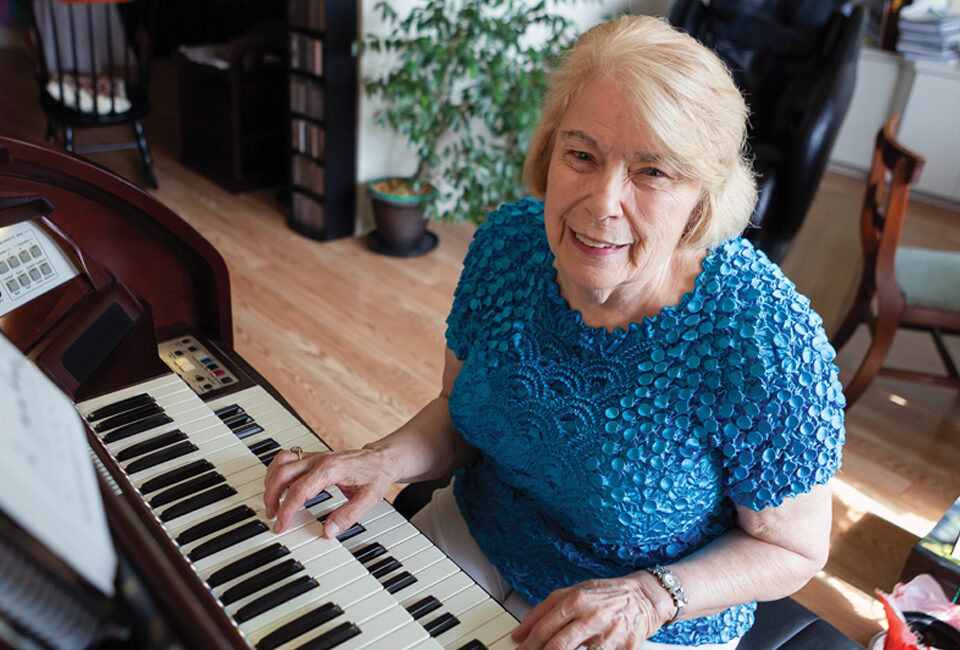

Jordan Pysz / iFoundMyDoctor.com
Bill has excellent vision after cataract surgery and no longer needs eyedrops to control his intraocular pressure with the implantation of the tiny iStent inject.
Bill Farrell was still just a youngster when he first showed off his management skills. “As a kid, I worked as an assistant manager for Bradlees Department Store in Boston,” the 76-year-old details. “I moved around to different areas until Bradlees closed down. After that, I moved to New York.” In New York, Bill worked in management positions for several retailers, including Kmart. He also moonlighted part-time in the hotel industry, working a night job that led to a change in career focus in which he managed three hotels before retiring from his post as a general manager for Best Western Hotels & Resorts in Miami. “At Best Western, I was in charge of the entire hotel,” Bill relates. “My duties included controlling the budget, hiring and dismissing employees, and making sure housekeeping was up to par. I retired about five years ago.” Bill spent part of his career managing a hotel in Broward County. While there, he was diagnosed with glaucoma, a serious disease associated with high pressure in the eyes, or intraocular pressure (IOP). Consistently high IOP can damage the optic nerve and lead to vision 

“Textbook Surgeries”
Cataract surgery is typically performed on one eye at a time with a break of a week or two between each procedure and begins with the breakup and removal of the affected lens. Then, a synthetic replacement known as an intraocular lens, or IOL, is implanted. The goal is to fit patients with IOLs that minimize their dependency on eyeglasses. MIGS is typically performed as an add-on to cataract removal. Research shows that adding MIGS does not increase the risk for complications compared to standard cataract surgery alone. The MIGS performed for Bill involved the implantation of the iStent inject®, a micro-bypass device that is designed to improve the outflow of aqueous humor. Aqueous humor is the fluid that flows in the front part of the eye. Aqueous humor is constantly produced by the ciliary body, a structure that supports the lens. To maintain a proper amount of aqueous, excess fluid is drained through specialized tissue called the trabecular meshwork. Blockage causes fluid to build and IOP to increase, leading to glaucoma. The iStent inject is made of implant-grade titanium and is 0.36 millimeters long and 0.23 millimeters wide, about one-third the size of a first-generation version, the iStent. Each iStent inject contains a central inlet and multiple outlets designed to provide multidirectional flow through the canal that drains aqueous humor. “The iStent inject is a tiny device, the smallest known to be implanted into the human body,” Dr. Fisher describes. “Unlike its predecessor, which consisted of one stent, the iStent inject utilizes two stents to create bypass pathways through the drainage system of the eye.” Dr. Fisher performed the dual procedures on Bill’s left eye in June 2019 and on his right eye a month later. According to Dr. Fisher, the procedures went smoothly and achieved the desired objectives. “The outcome of each MIGS procedure depends on how the patient responds to the stent,” the ophthalmologist explains. “The majority of my patients who receive the iStent inject go down to one glaucoma drop or eliminate drops altogether. “Mr. Farrell’s IOP is well-controlled with no eyedrops at all now, and he’s no longer dependent on glasses because he sees 20/20 without them. Mr. Farrell experienced a beautiful result from his surgeries. They were textbook surgeries.”
Excellent Vision Clarity
“I don’t have to use eyedrops for my glaucoma anymore,” Bill confirms. “I use drops for dryness once in a while, but that’s it. And the clarity of my vision is great. I don’t have to wear prescription glasses, and I can read from quite a distance away. “The only time I have to wear glasses now is when I’m reading a book or newspaper up close. I actually see a lot of the words without the reading glasses on, but that causes a little too much strain on my eyes.” Bill also noticed a tremendous difference in the clarity of his peripheral vision. “It’s 100 percent better than it was before,” he enthuses. “I don’t get headaches anymore, and my eyes don’t get tired. I don’t experience any pain or pressure. Nothing.”






Leave a Reply